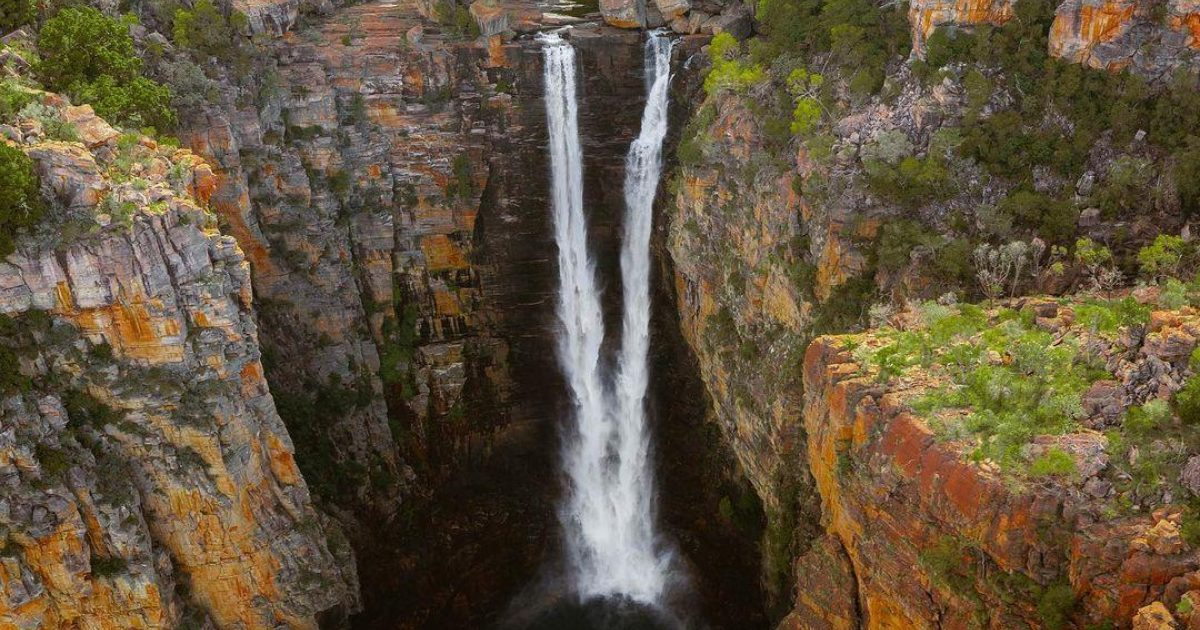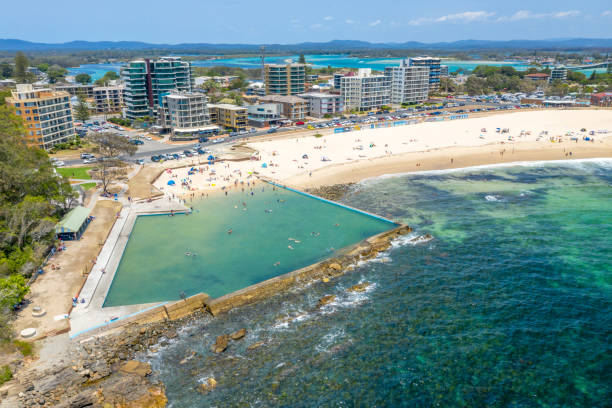Whether you’re an avid explorer or simply looking for an escape into nature, Kakadu National Park offers an adventure that transcends the ordinary. Sprawling over 20,000 square kilometers in the Northern Territory of Australia, it’s a symphony of biodiversity, indigenous culture, and ancient geology. This article guides you on how to make the most out of your trip, discover the park’s secrets, and enjoy everything from serene waterfalls to rugged escarpments. Discovering Kakadu is more than a journey; it’s an awakening of the senses amid one of the world’s most enchanting natural landscapes.
Introduction to Kakadu National Park

Envision a land where ancient escarpments guard the tales of time and where nature’s palette paints stunning panoramas every wet and dry season. This is Kakadu National Park, Australia’s largest terrestrial national park and a dual UNESCO World Heritage site recognized for its exceptional natural beauty and the living cultural heritage of the Bininj/Mungguy people. It outshines any conventional tourist destination by encapsulating both profound cultural significance and unparalleled natural biodiversity.
The park is a tapestry of habitats ranging from tidal flats to floodplains, making it a sanctuary for an array of wildlife and a beacon for travelers and nature enthusiasts. With dynamic landscapes that shift with the seasons, Kakadu is a year-round destination. However, many find the dry season, with its temperate climate and accessible terrains, the ideal time to fully embrace this majestic land.
Planning Your Adventure to Kakadu National Park

Embarking on the journey to the remarkable Kakadu National Park necessitates thorough planning to maximize your exploration. Crafting an itinerary that might include a 5-day Kakadu tour can provide ample time to immerse oneself in the park’s diverse offerings. To ensure your visit is as enriching as possible, here are key aspects to consider:
Every visitor to Kakadu National Park must obtain a park pass, which is necessary to access the park’s facilities and attractions and can be easily obtained online or at various visitor centers throughout the park. The funds raised from these fees are an integral part of preserving the park’s natural and cultural resources.
Equally important is to be mindful of what to pack for your outdoor adventure. The region’s climate is often hot and humid, and sudden changes in weather can occur. Here’s a list of essentials to include:
- Sturdy walking shoes or hiking boots
- Lightweight clothing for layering
- A broad-brimmed hat and high SPF sunscreen
- Insect repellent
- Plenty of water and snacks
- First-aid kit
Discovering the Heart of Kakadu
At the heart of Kakadu, awe-inspiring landscapes beckon. The park’s renowned rock art sites, such as Ubirr and Nourlangie, offer a window into the lives of the area’s earliest inhabitants, with artwork dating back thousands of years. Venture out on a guided tour to understand the stories depicted on these ancient canvases. What’s more, the dramatic waterfalls, including Twin Falls and Jim Jim Falls, are sure to take your breath away with their sheer beauty and power – especially after the wet season when they’re at their most magnificent.
There is an array of activities designed to facilitate a deeper connection with the park. Walking trails of various difficulties crisscross the land, while cruises along the rivers offer unique vantage points to appreciate the park’s scale and diversity. Visiting these sites during a 5-day Kakadu tour enriches the experience, allowing adequate time to truly soak in the splendor.
Wildlife Encounters in their Natural Habitat
Kakadu National Park is an unparalleled haven for wildlife enthusiasts, with its ecosystems boasting an incredible variety of flora and fauna. The Yellow Water Billabong, a pristine wetland, is an ideal spot for bird watchers, hosting an abundance of bird species ranging from jacanas to jabirus. This and other billabongs are also habitats for the park’s famed saltwater crocodiles—respectful observation from a distance is advised.
Viewing these creatures in their natural setting is an adventure in itself and understanding their importance to the local ecology is crucial. Visitors are invited to participate in guided tours to increase their awareness and appreciation of the unique wildlife in Kakadu. Remember, this is their home, and we are the guests; sustainable interactions are key to conservation efforts.
Embracing the Indigenous Culture
Kakadu is not just a nature reserve; it is a living cultural landscape that the Bininj/Mungguy people have nurtured for tens of thousands of years. There is an invaluable opportunity to engage with indigenous culture through organized cultural tours or art workshops. Such interactions offer profound insight into the traditional knowledge, stories, and art forms, and are integral to the park’s visitor experience. The commitment to honoring and preserving these indigenous traditions cannot be understated and is central to the essence of Kakadu.
By partaking in these cultural experiences, visitors can gain an understanding of the indigenous way of life and their symbiotic relationship with the land. It reinforces the importance of respecting their heritage and ensuring the longevity of their storied traditions.
Where to Stay in and around Kakadu National Park
After a day of exploration, finding the perfect place to rest is essential. Kakadu offers a variety of accommodation options to cater to the preferences of any traveler, from the rustic charm of camping under the stars to the comfort of eco-friendly lodges. Orienting your stays near the attractions you wish to visit can provide convenience and optimize your time in the park.
For those inclined to the outdoors, several campsites are scattered within the park. If you’re looking to indulge in some creature comforts after a long day, you can retire to one of the park’s lodges. Dining on local cuisine is highly recommended, offering tastes that reflect the region’s biodiversity.
Here are the best spots for setting up camp for the outdoor enthusiasts:
- Cooinda Camping Ground: Close to Yellow Water Billabong
- Jabiru: A central location ideal for exploring the park
- Gunlom: Known for its scenic plunge pool and waterfall
An Adventurer’s Paradise: Activities for the Thrill-Seekers
The allure of Kakadu is not confined to its natural beauty. The park’s rugged terrain offers an adrenaline-fueled escape for the more adventurous spirits. From heart-pumping hikes to the enigmatic waterways ripe for fishing, there’s no shortage of action. For the 4WD enthusiasts, the park’s challenging tracks promise an off-the-beaten-track encounter with the wild outback.
Outdoor activities within Kakadu are designed to cater to all fitness levels and adventure thresholds. Guidance from seasoned professionals is available to ensure both an exhilarating and safe experience for all thrill-seekers.
Tips for Safe and Sustainable Travel within Kakadu National Park
Responsible tourism plays a pivotal role in the conservation efforts of Kakadu National Park. Visitors must recognize their impact on this delicate ecosystem, ensuring their presence doesn’t disturb the natural balance. Heeding safety directives, staying within marked paths, and minimizing waste are just a few ways to demonstrate respect for this treasured land.
Your safety is integral to a positive park experience. As such, it is crucial to be well prepared for the variable conditions and heed all advice and warnings, particularly regarding the presence of crocodiles in waterways. Here’s a table outlining additional safety measures and sustainable practices:
| Aspect | Advice |
|---|---|
| Wildlife | Observe from a safe distance, do not feed or approach animals. |
| Environment | Stick to designated trails, keep waterways clean, and carry out all rubbish. |
| Camping | Use established fire pits, conserve water, and respect noise curfews. |
| Personal Safety | Stay hydrated, use sunscreen, wear appropriate clothing, and carry a communication device. |
| Cultural Respect | Learn about local customs, avoid entering restricted areas, and refrain from touching rock art. |
Conclusion
In conclusion, Kakadu National Park stands as an exemplar of the sublime fusion of cultural heritage and natural wonder. It offers not just an escape into the wilderness, but a journey into the heart of Australia’s ancient traditions and a spirited living environment. By meticulously planning your visit and engaging with the park responsibly, your investment extends beyond mere travel – it becomes a contribution to the ongoing narrative of Kakadu, a narrative that you too can partake in and preserve for future generations.
FAQs
Q1: Do I need a permit to enter Kakadu National Park?
A1: Yes, visitors are required to have a park pass, which can be purchased online or at visitor centers within the park. These passes are essential for the conservation and maintenance of the park.
Q2: What is the best time of year to visit Kakadu National Park?
A2: The preferred time to visit is during the dry season (May to October), when attractions are most accessible. However, the park is open year-round with each season offering unique experiences.
Q3: Are there any dangerous animals in Kakadu National Park I should be aware of?
A3: Kakadu is home to various wildlife, including saltwater crocodiles. Always adhere to park safety guidelines to ensure a safe visit.
Q4: Can I camp anywhere in Kakadu National Park?
A4: Visitors can only camp in designated campgrounds within the park. These sites are regulated to ensure visitor safety and environmental conservation.
Q5: Is it possible to experience Kakadu’s indigenous culture firsthand?
A5: Absolutely. There are many indigenous-led tours and interactive cultural experiences that provide an authentic perspective on the traditional owners’ continued connection to the land.



